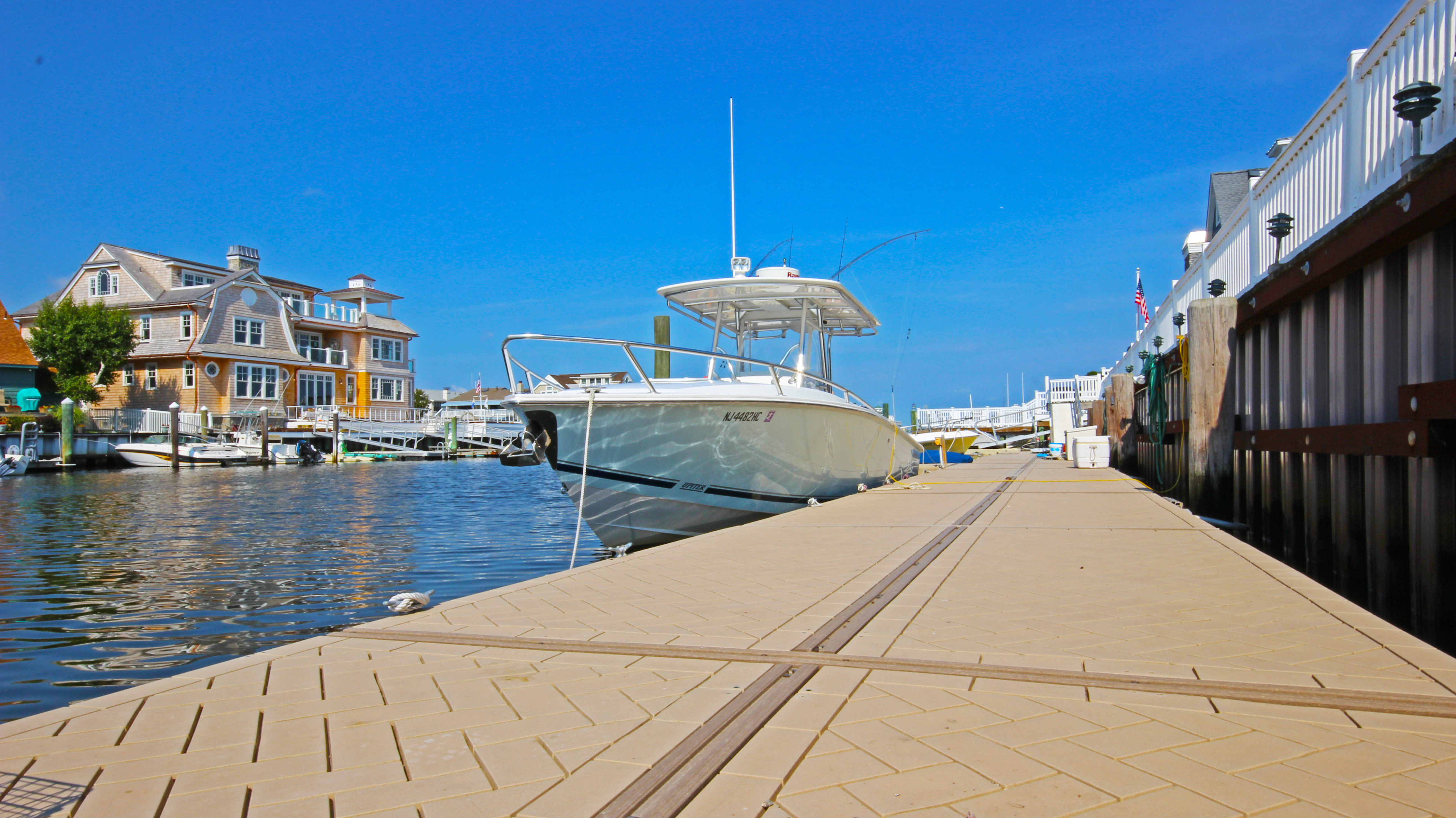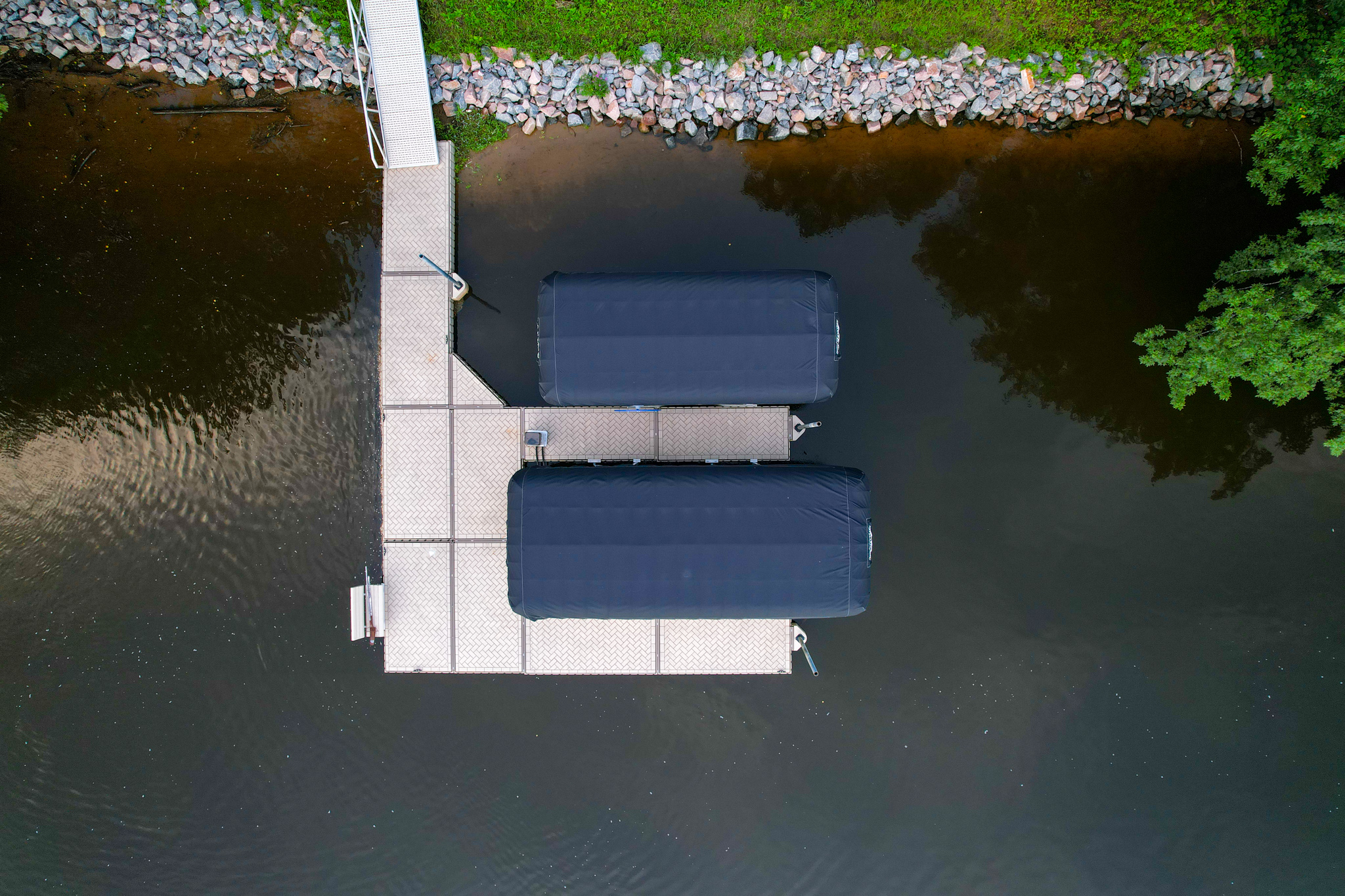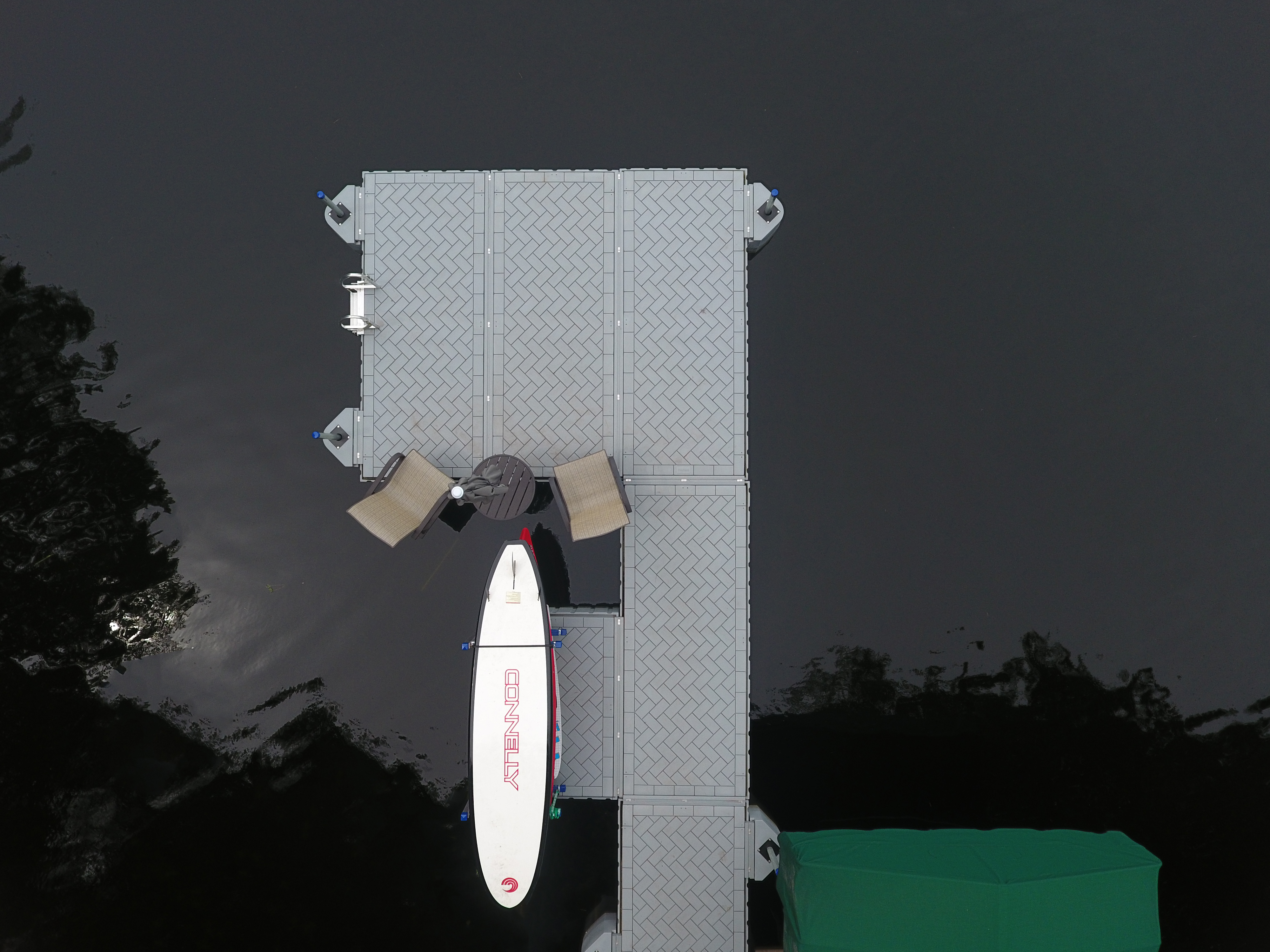Taking it Out
If you live in an area with harsh winters, or your freezing temperatures start in autumn, it’s probably best to remove your dock for the season and install it once the spring thaw is well underway. Get a professional team involved, or ask some strong, experienced friends and family to give you a hand with the removal and storage. Get tools together beforehand, including a vehicle, winch, or another way to haul your dock out of the water. Make sure you wear the proper waterproof, windproof, and warm clothing that will allow you to use tools.
Unfasten and store the dock sections in an enclosed storage area if possible. If you can’t store them in a building, secure them on the shore, covering them loosely with a weighted tarp to protect them from the elements but keep water from accumulating and freezing inside the sections. Clearly mark anything stored on the shore to avoid accidents with skiers, snowmobilers, and other people and vehicles that come out in the winter.
Leaving it In
If it’s difficult or impossible to remove your dock from the water for the winter, you might be able to leave it in. If you live in a protected bay with no ice movement, you may be able to leave your dock in. If that’s the case, disconnect hinged connections and finger sections to allow straight sections to float separately. Disconnect your anchor chains and tie your dock to a tree or other solid object on the shore; this allows it to move freely with the water and settle along with the ice (which keeps it from getting lost if a big storm blows through). If there aren’t trees, loosening the anchor chains by a few feet will achieve similar results. A bubbler or de-icer is a good idea for systems that need to stay in the water to prevent ice accumulation.
If you choose to leave any dock system in your water over the winter, many warranties won’t cover any damage from ice floes or other winter conditions.
PolyDock Floating Docks
The good news is that PolyDock sections aren’t affected by extremely cold temperatures or ice. Assuming there’s nothing stored on the dock and you’ve kept the surface cleared of snow and other debris before it could freeze in, it only drafts a couple of inches of water. This means any ice pressure will push your dock sections up, rather than in, which reduces the likelihood of damage. If you live in an area with lots of pressure ridges or ice movements, pipes and pilings should be removed, and your dock system should be tied to a secure object on the shore with some slack in the line.
If you’re looking for more personalized recommendations for your shoreline or just want other advice on your PolyDock system’s winterization or removal, reach out to us. A local dealer will be an expert on your water and our products and be able to point you in the right direction.




